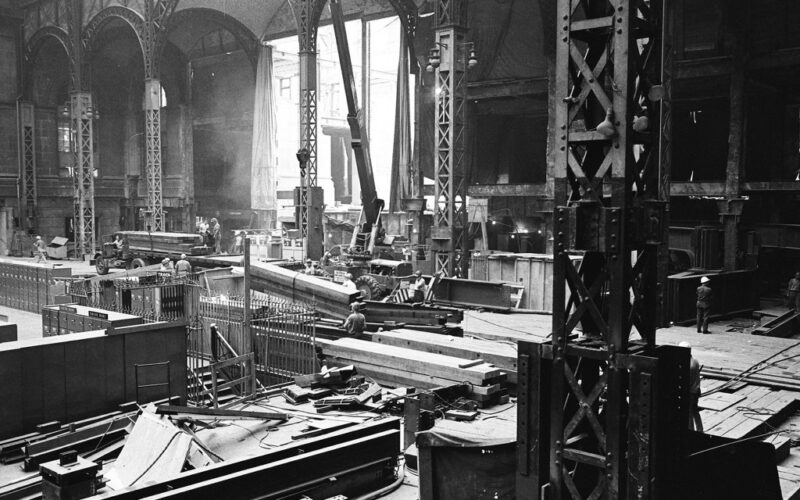Today marks an architectural anniversary New York City has still not recovered from. On Oct. 28, 1963, the destruction of Pennsylvania Station, the 1910 Beaux-Arts masterpiece of Charles McKim, the co-founder of the renowned architectural firm of McKim, Mead, and White, began.
What has made this anniversary relevant again is that the cramped, fluorescent-lit Penn Station that replaced McKim’s landmark is now slated for rebuilding, and we face the question: How do we avoid a second rebuilding disaster?
In 1963 The New York Times characterized tearing down the original Penn Station as a “monumental act of vandalism,” but 62 years later, such criticism does not guarantee we will do better. The Trump administration, which has authorized $43 million toward preliminary engineering work at a time that it killed funding for a new rail tunnel under the Hudson River, has plans for construction to begin on the new Penn Station by 2027. U.S. Transportation Secretary Sean Duffy even remarked that calling the new Penn Station Trump Station has “a nice ring to it.”
The president’s potential influence on the design of a future Penn Station that would have the appeal of the original is worrying. His obsession with gold-framed mirrors and polished marble is reflected in Trump Tower on Fifth Ave., which celebrates wealth at every turn.
By contrast, in the Penn Station he designed, McKim created a classically inspired building that in the age of railroads drew importance from the engineering that brought trains to it. Prior to Penn Station’s existence, riders coming from south of New York had to disembark from their trains in New Jersey and take a ferry to the city. Building a series of tunnels underneath the Hudson and East Rivers was an extraordinary feat at the time, and Alexander Cassatt, the president of the Pennsylvania Railroad, wanted a train station to match the feat.
A merely functional train station would not do, and in McKim, whose previous buildings included the Boston Public Library and Low Memorial Library at Columbia University, Cassatt found an architect with a vision that matched his. McKim’s Penn Station told travelers they were important people, not just customers. It welcomed them with 84 huge granite Doric columns at its entrances, then ushered them into a general waiting room with a 150-foot vaulted ceiling that let in light through a series of semicircular windows.
From there travelers passed through a concourse with steel-truss arches and glass skylights that extended the grandeur of Penn Station. The contrast with the Penn Station that replaced McKim’s masterpiece was summed up by architectural historian Vincent Scully Jr., who observed of the difference, “One entered the city like a god; one scuttles in now like a rat.”
When the current Penn Station was built, the goal of monetizing it as much as possible led to the construction of a new Madison Square Garden that arose over Penn Station, shutting out the sunlight and making the rebuilt Penn Station with its low ceilings and tile-and-chrome aesthetic what it is now — essentially a subway station for train riders.
The damage to public space that destroyed McKim’s Penn Station caused led to the creation of the New York City Landmarks Preservation Commission in 1965 and the National Historic Preservation Act of 1966. As a result, when in 1975 a plan was put forward to build a 55-story office tower over Grand Central Terminal, a coalition of preservationists, who had as their spokesperson former First Lady Jacqueline Kennedy Onassis, was able to save Grand Central from the same fate as Penn Station.
Today we still lack a plan that promises a new Penn Station will come close to equaling the original. For starters, a Penn Station that can stand on its own will require moving Madison Square Garden, and it will need architects who believe in McKim’s legacy.
The good news is that we have a recent, successful example of how past and present can be combined in the 1911 New York Public Library’s restored Rose Reading Room, where historic casement windows keep company with computer outlets at every table.
The challenge for renewing Penn Station will be deciding how much of the original building should be incorporated into the new one, and here, too, we have a rule of thumb to steer by in the rhetorical question Jacqueline Kennedy Onassis posed in her Grand Central preservation talk when she asked, “Is it not cruel to let our city die by degrees, stripped of all her proud moments?”
Mills is chair of the literature department at Sarah Lawrence College and author of “Their Last Battle: The Fight for the National World War II Memorial.”








